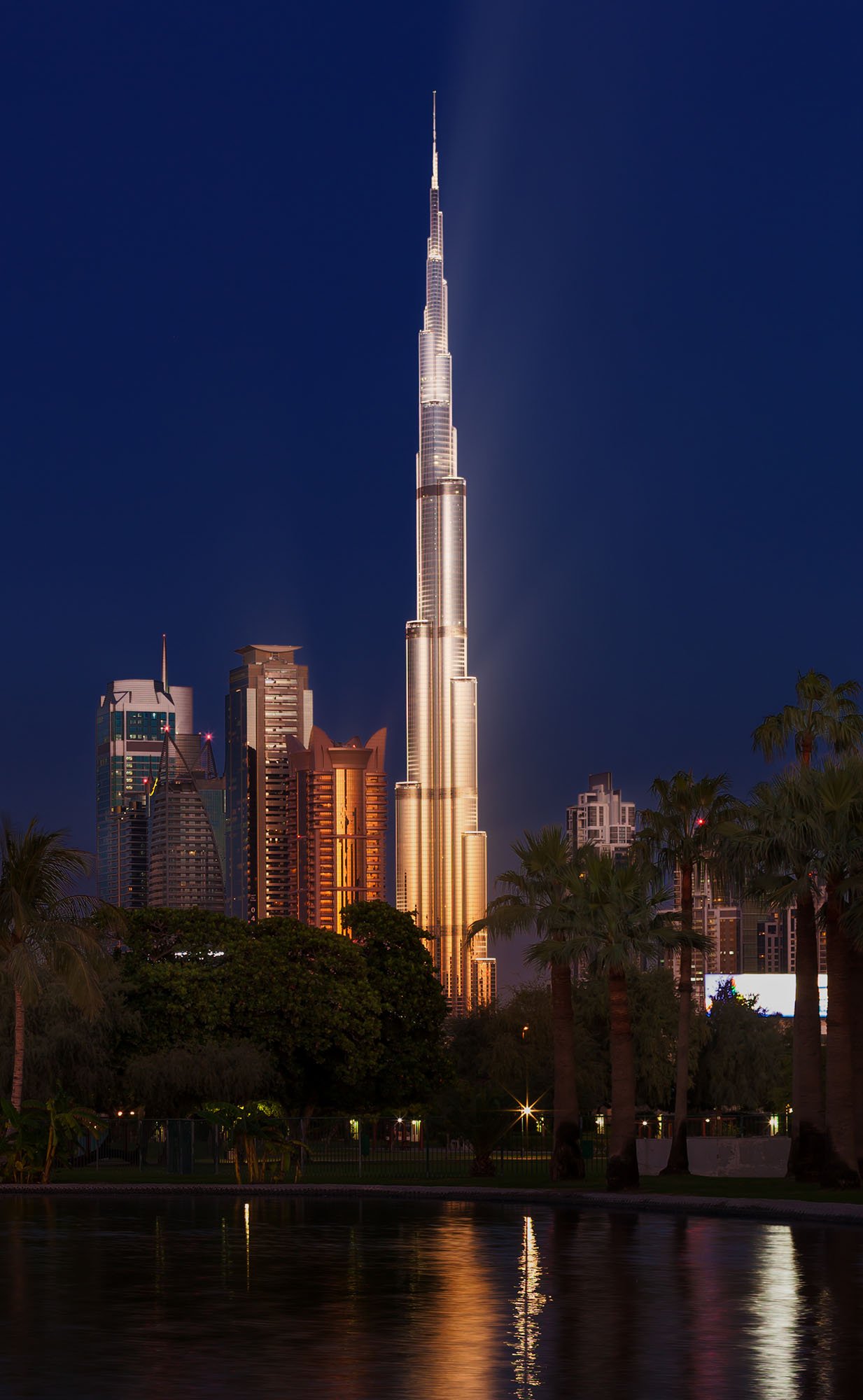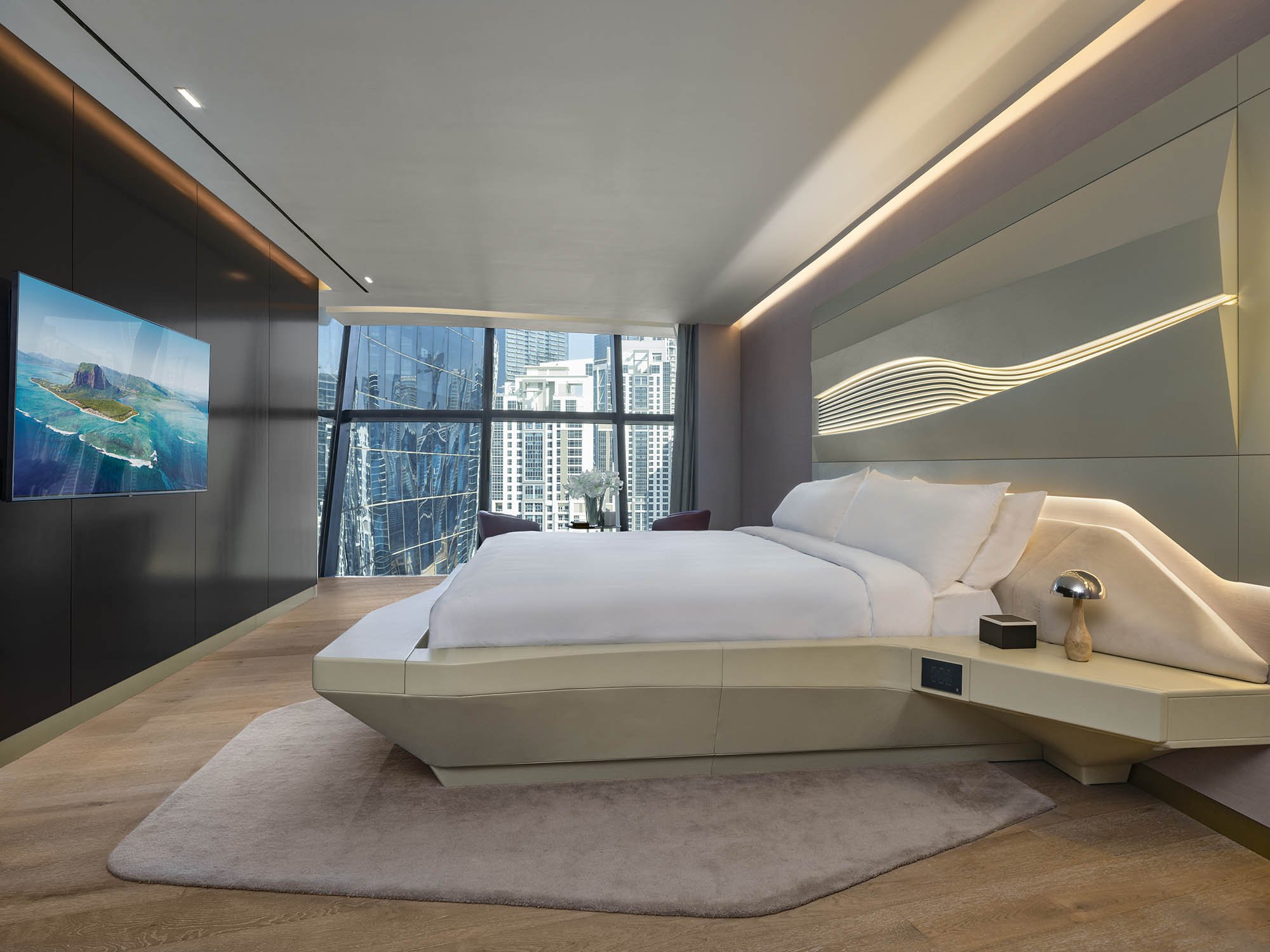‘THE OPUS’ BY OMNIYAT, DESIGNED BY ZAHA HADID ARCHITECTS
“Architecture must contribute to society's progress and ultimately to our individual and collective wellbeing." Zaha Hadid.
WHY SHOOT ARCHITECTURE?
What is the point of any beautiful creation if there are no eyes to gaze upon it? I wonder this as I drive along the Sheikh Zayed Road in Dubai, past the spectacular row of shiny skyscrapers, each more imposing and opulent than the previous one.
Professional architectural photography is the architecture's identical twin. The existence of architecture is meaningless unless it is seen and appreciated. The architecture's beauty, as well as its occasional ugliness must be studied, documented, acknowledged, marveled and sometimes laughed at, but most importantly, it must be learned from. Architecture is the story of time, the story of the people. The record of architecture matters, because humans don’t just create it. They tend to destroy it as well. There is no record of the purpose, intent, or people for whom architecture was designed if it is not depicted. The architecture is orphaned in the absence of photographic or illustrated representation, and we are all the poorer for it.
Without the millions of photographs of the Burj Khalifa and the Eiffel Tower, these two landmarks would have only been visible to the fortunate few who witnessed them firsthand. However, for the billions of people who can only dream of visiting Dubai or Paris in their lifetime, the Burj Khalifa and the Eiffel Tower are as real, beautiful, and wondrous as the photographs depicting them. This is why expert architectural photography is so valuable. It makes the architecture accessible to anyone with a printed magazine, book, or phone with an internet connection. Architectural photography cannot and should never be divorced from its inspiration.
Architectural photography, like the process of architectural design and construction, is a science and an art form that requires many years of practice before it is truly mastered. Architectural photographers must conduct thorough research on their subject. It is a field of photography that cannot be rushed; it requires precision, meticulous planning, and a great deal of patience. A well-executed architectural photograph tells the story of form, design intent, and context.
the hidden
But there's another, equally important aspect of architectural photography that goes unnoticed because it happens away from most people's eyes. It's the post-production process. This crucial step transforms the raw photograph, or digital negative, into a work of art. The goal of image editing is to show the purity of the architectural or interior design without any unnecessary distractions, free of the camera's technical limitations. It is during the post-production phase that meticulously crafted architectural images are distinguished from the vast pool of casually snapped photos taken without thought or intent. This procedure is carried out "by hand," using advanced image editing software such as Adobe Photoshop and Lightroom, as well as specialty plug-ins that extend their capabilities. It is a time-consuming, deliberate, tedious, and frequently difficult task that I thoroughly enjoy.
the analysis and THE LIST
Before I begin editing an image, I examine it from every angle and make a list of the issues I need to address so that I don't forget them once I'm fully immersed in the work. I look for the following things:
Exterior shots: Vertical and horizontal lines must be straigntened. No one likes to see a deformed looking building. Remove any stray tree branches entering the frame. Recover the highlights, control exposure across the frame. Any elements which doesn’t contribute to the picture in a positive way must be removed.
For interior shots: overexposed windows. Because of the camera's limited dynamic range, daytime interior shots typically have blown out windows. I use an exposure blending technique known as "window pull" to restore the outside view.
Unlike the human eye, the camera sees the ultraviolet component of white light. Because of this, the natural light that enters the room through the windows tends to "pollute" the interiors with an unwanted blue hue. To combat this, I blend multiple exposures of the same room at different color temperatures. The rooms must appear well lit with natural looking light, absent of blue hues.
Any visual distraction has to be dealt with; electrical wires, plugs, paint cracks and scratches, CCTVs, water sprinklers, dust patches, and so on. Fingerprints on polished surfaces, electric plugs and wires, stains, blemishes, and imperfections have no place in the image because they are not a part of the architect's original design. Photography is a deductive art form.
Uneven surfaces, bumps and ripples on the ceiling and the walls catch unwanted highlights and take the eye away from the subject. They need to be made smooth.
Bedsheets, cushions and pillowcases can never be smooth enough and tend to look better if they are digitally "ironed".
Excessive exposure bloom and glares around light sources are bothersome and must be brought under control.
Sharp reflections on glossy surfaces that draw attention to themselves must be reduced.
Big flat TV panels are a shiny distraction when they are switched off. I turn them "on" digitally with an image replacement.
The final stage of adjustments goes to restoring the vibrancy of the colors and the crispness of the textures of the wall finishes, carpets, furniture, and accessories, among other things.
I consider light painting with selective exposure brushes that direct the eye in a specific direction, where I want the attention.
Image sharpening and color grading in general.
BEFORE & aFTER THE EDITING
You are kindly invited to view the gallery of fully edited photos I recently took at Zaha Hadid Architects' 'The Opus' building in Dubai. I also made a cool short video which demonstrates four photographs before and after I edited them. The average time to edit one image is 1 hour, but more challenging scenes (like the master bedroom) can take an upwards of 4 hours to finalize.
the gallery
I hope you enjoyed my thoughts and learned something about my reasoning, the methods and approach to architectural photography. Please let me know how you found this blog post, and I hope to hear from you in the comments section below.





















